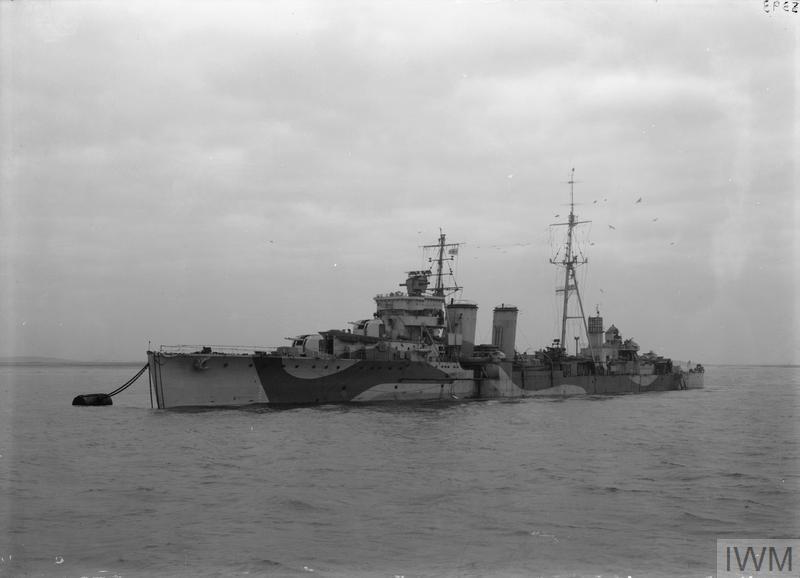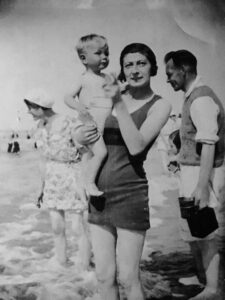Edgar enlisted into the Royal Navy as a boy seaman in January 1908 and joined the boy’s training establishment HMS Ganges II, which was permanently moored at Harwich. His grandfather had served on this ship during its final cruise in the 1860s.
Entry was conditional on adequate physical height, weight, and medical fitness and evidence of being of ‘good character’. Edgar’s parents would have signed a declaration that he would serve for a minimum period of 12 years. In March he was promoted from Boy 2nd Class to Boy 1st Class, having shown sufficient proficiency in seamanship and accumulated at least one good conduct badge. He was transferred to HMS Warrior in October 1908, a new armoured cruiser assigned to the 5th Cruiser Squadron in the Channel Fleet. Armoured cruisers were designed to operate as long-range, independent warships, capable of defeating any ship apart from a battleship and fast enough to outrun any battleship it encountered.
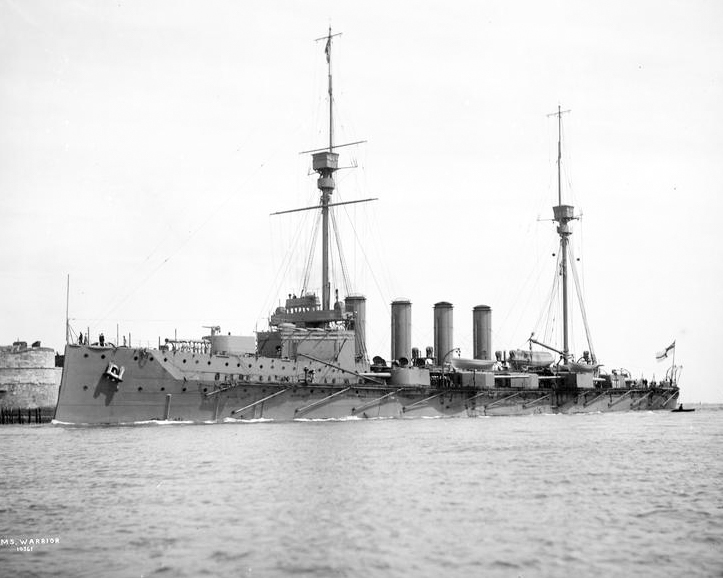
On Edgar’s 18th birthday he automatically became rated as an Ordinary Seaman and subject to the Naval Discipline Act as applicable to adult seamen. At this time, he was given the service number K3479 and described as being 5 feet 2 inches tall with light brown hair, grey eyes, and a fresh complexion.
Early in 1909 he was transferred to HMS Bedford, a Monmouth-class armoured cruiser that had been built to protect ships along the trading routes of the British Empire. It was at this time based on China Station with the Eastern Fleet, which must have been a fantastic experience for a boy from Middlesbrough. In June his rating was changed to Stoker 2nd Class.
In July 1909 Edgar joined the crew of HMS Astraea, an older protected cruiser based at Colombo in Ceylon (now Sri Lanka) and was promoted to Stoker 1st Class exactly a year later.
He then returned home and between periods of leave did two short stints aboard reserve ships as they were readied for return to service, beginning with HMS Charybdis in September and November 1910 and then HMS Halcyon between December and January 1911.
Edgar then joined the crew of HMS St George in February 1911. This was another protected cruiser of the (coincidentally named) Edgar-class, although by this time it was obsolete and had been converted into a destroyer depot ship at Chatham for the 3rd Destroyer Squadron. Early destroyers were small to maximise manoeuvrability, and so cramped full of engines and machinery that there was little space for long-term living quarters. The role of the depot ship was to provide berthing and dining accommodations, as well as housing the cooks, administrative, mechanics and medical personnel available to the whole flotilla.
The 1911 census captured the ships of the 3rd Destroyer Squadron anchored off the port of Grimsby. The ship joined the 6th Destroyer Flotilla in 1912. Edgar served onboard for 2 years and 7 months, during which time he was promoted to Acting Leading Stoker. A detailed log of the ships movements is available.
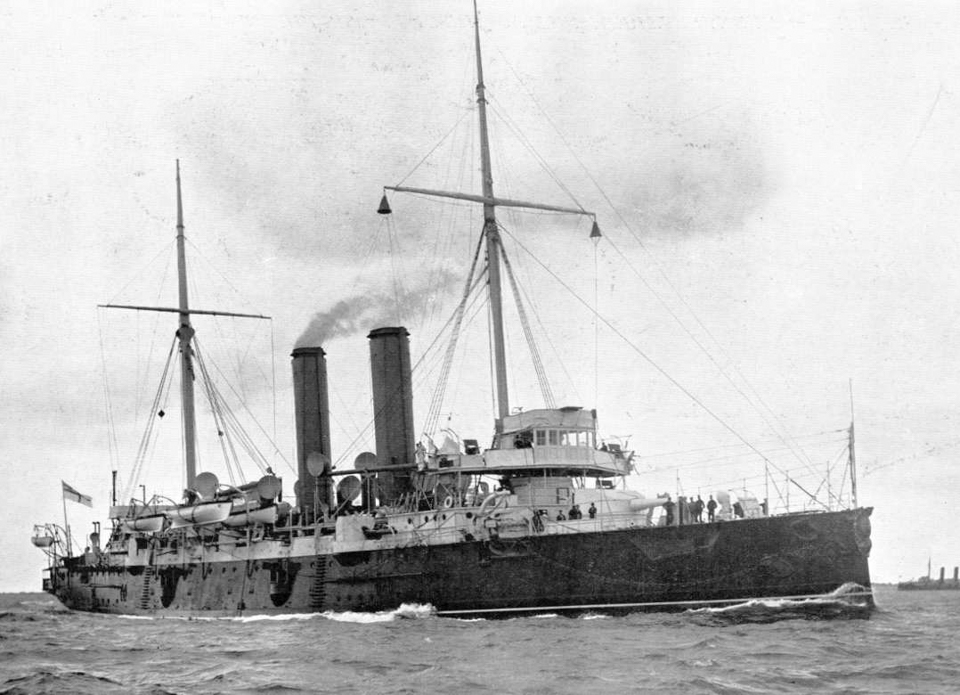
The First World War
After three months of shore duties at Chatham, Edgar joined the crew of his next ship in January 1914. HMS King Edward VII was a powerful battleship and flagship of Vice Admiral Bradford and his 3rd Battle Squadron of the Home Fleet. Upon the outbreak of war with Germany, the squadron was assigned to the Grand Fleet and based at Rosyth in Scotland.
The squadron was initially used to supplement cruisers on the Northern Patrol, part of the blockade of Germany. Its main task was to prevent trade to and from Germany by checking merchant ships and their cargoes, as well as preventing German warships from breaking into the Atlantic. In November the squadron was detached to reinforce the Channel Fleet at Portland, returning to the Grand Fleet at the end of the month. For the remainder of Edgar’s tour, the squadron sailed ahead of the Grand Fleet during sweeps, watching for mines and enemy vessels.
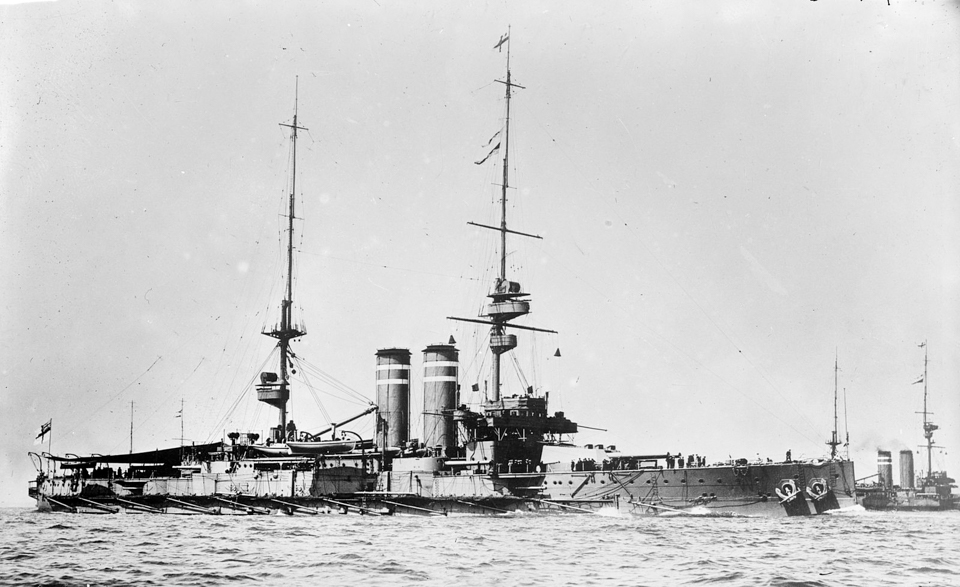
After 15 months onboard, Edgar returned to shore duties at Chatham in March 1915. His next ship, HMS Mars, was at that point being converted from an obsolete battleship into a troopship. Edgar joined the crew in September and soon sailed for the Dardanelles, arriving at Mudros on the Greek island of Lemnos in early October. The ship participated in the evacuation of Allied troops from Anzac Cove on 8-9 December 1915 and from West Beach at Cape Helles on 8-9 January 1916. They returned to Devonport in February 1916 for conversion to a harbour depot ship, at which point Edgar departed.
Q-Ships
He spent the next six months on shore duties at Chatham, thereby missing the major sea battle of the war at Jutland on 31 May. He joined the crew of HMS Salvia in September 1916. This was a brand new Aubretia-class minesweeper, one of the first ships designed as such, with a triple hull at the bow to provide protection against mine explosions. However, the best use of the design was found to be for convoy escort, and they were pressed into service as sloops.
As they had been built by commercial builders, the ships often resembled small merchantmen. The idea was had to use some to lay a trap for German U-boats in a tactic known as the Q-ship. At this time, most unaccompanied merchantmen were sunk by gunfire from the submarines while they were on the surface, so that they could save their valuable torpedoes for more difficult targets. The Q-ships, disguised as merchant vessels, would deceive U-boat commanders into closing with them on the surface before then unleashing their powerful armament and sinking the submarine.
On 20 October 1916, Salvia was off the West Coast of Ireland when a submarine appeared astern, opened fire, and began to chase. The engagement which followed was graphically described in Keble Chatterton’s Q-Ships and their Story. The Salvia was hit on the starboard side by a 4.1-inch high-explosive shell and pretended to run away, but the steering gear unfortunately broke down while the engine room was damaged and full of scolding steam and fumes. The U-boat consequently escaped. Six months later, on 20 June 1917, Salvia was sunk. When well out in the Atlantic it was struck by a torpedo fired from a submarine, and as the ship began to break up the captain ordered the crew to abandon ship. Luckily, they were picked up by another Q-ship, but five men had been killed. Edgar had been promoted to Acting Stoker Petty Officer just four days before.
Edgar returned to Chatham where he spent another four months of recuperation and shore duty before joining the crew of HMS Polyanthus in November, another Aubretia-class Q-Ship. He transferred to the major British naval base at Gibraltar in May 1918 where he served for 18 months, being promoted to Stoker Petty Officer 1st Class in August. He was awarded the 1914-15 Star, the British War Medal, and the Victory Medal.
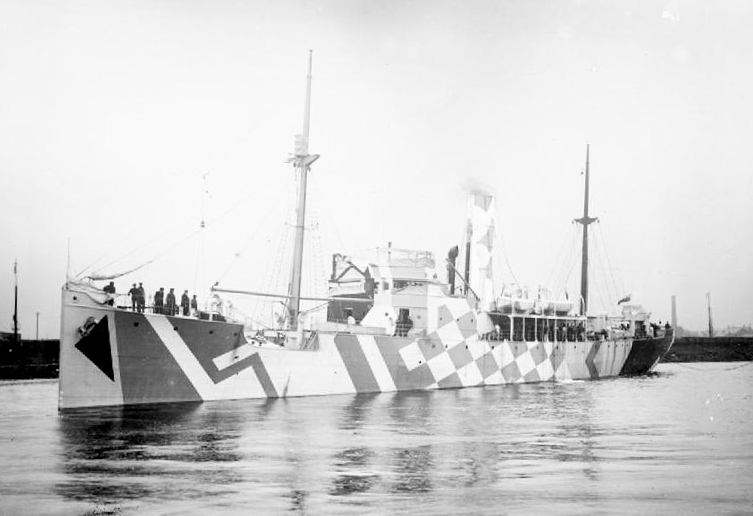
Post-war service
After the Armistice, Edgar had a short two-month spell onboard HMS Hermione between December 1919 and February 1920, which had just been decommissioned as HQ depot ship for motor launches and coastal motorboats.
Edgar joined the crew of HMS Cleopatra in October 1920. This was a modern C-class light cruiser that was part of the Atlantic Fleet, then joined sister ship HMS Caledon with the 2nd Light Cruiser Squadron in August 1921. The ship participated in the Irish Patrols in 1922 before being detached to the Mediterranean in September, then to Memel in January 1923 during the rebellion in Lithuania.
Edgar returned to Chatham in January 1923 for three months before joining the crew of HMS Agamemnon in April. This was an old Lord Nelson-class battleship that had been modified for use as a radio-controlled target ship. The crew of 153 maintained and operated her when not under fire. The various trials she was involved with included being bombarded with poison gas and subjected to attack by aircraft. Edgar returned to Chatham in October for another month ashore.
In January 1924 Edgar joined the crew of HMS Marazion, a Hunt-class minesweeper that had been converted into a depot ship for the 4th Submarine Flotilla based on China Station at Hong Kong. This posting not only took Edgar far from his family but would be the longest of his career at 2 years and 10 months.
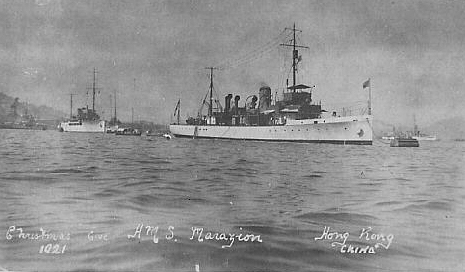
On 25 July 1924, Edgar was awarded the Naval Long Service and Good Conduct Medal for 15 years of service with three good conduct badges. Since there were several offences which would normally preclude the award of the medal, the recipient was also paid a gratuity. Edgar’s medal was issued by the captain of the 4th Submarine Flotilla.
Naval tradition dictates that any ship crossing the equator must pay their respects to the Lord of the Seas, King Neptune to gain his acceptance. The infamous ‘Crossing the Line Ceremony’ requires all those who had never previously crossed the line (and a few extras) to be ‘charged for their crimes’ and get the justice they deserve. Edgar crossed the line and was awarded his certificate on 10 March 1925, although it is hard to believe that someone with his experience had never crossed the equator. He was assigned to the crew of the C-class light cruiser HMS Castor in November 1926 for five weeks, probably during her journey back from China Station to Chatham.
After almost 4 months at Chatham, he joined the crew of HMS Ganges, the Boy’s training establishment where he had begun his career almost 18 years ago. He served here for 15 months before another month at Chatham. In August he joined HMS Egmont II which was a shore base in Malta that served as the accounting base for Mediterranean-based destroyers. He possibly served on the destroyer HMS Broke, which was refitted at Malta dockyard from May to August 1929. Edgar was promoted to Chief Stoker in March 1930 and returned to Chatham in May to join the crew of HMS Trinidad, an old destroyer held in reserve at the docks. He was pensioned on 22 December 1930 after 22 years’ service.
Out of retirement
Edgar was recalled to duty in 1939 and posted to Chatham. In July 1941 he joined the crew of HMS Badger, headquarters of the Flag Officer in Charge, Harwich who administered the Harwich Station. This was the largest base for small craft in the United Kingdom, including minesweepers, a destroyer flotilla, a submarine squadron, and motor torpedo boats. There were over 1,300 shore staff, and its facilities included oil tanks, engineering sheds, signals stations, bomb disposal, salvage and rescue tugs, minefield control, harbour entrance signal/control station, and officers’ and ratings clubs. Edgar was allowed to return to retirement in 1944.
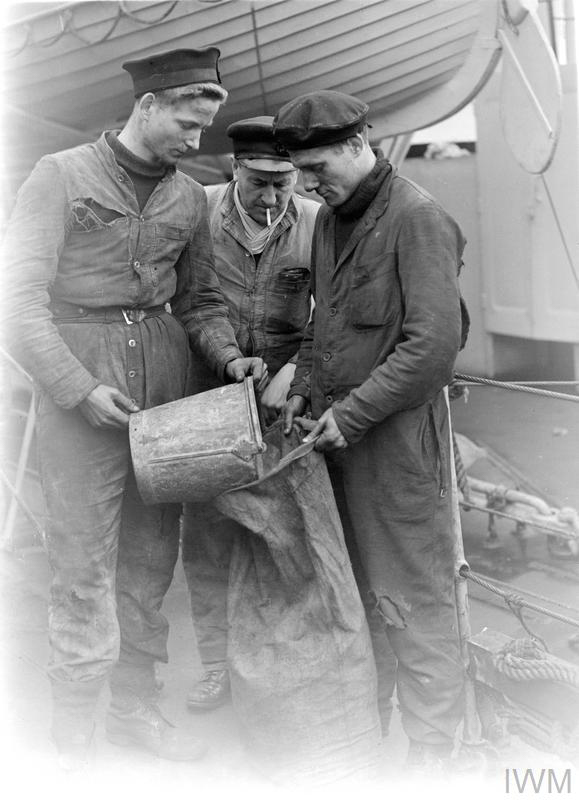
Ships
- HMS Warrior (1908)
- HMS Bedford (1908)
- HMS Astraea (1909)
- HMS Charybdis (1910)
- HMS Halcyon (1910-1911)
- HMS St George (1911-1913)
- HMS King Edward VII (1914-1915)
- HMS Mars (1915-1916)
- HMS Salvia (1916-1917)
- HMS Polyanthus (1917-1918)
- HMS Hermione (1919-1920)
- HMS Cleopatra (1920)
- HMS Caledon (1921-1923)
- HMS Agamemnon (1923)
- HMS Marazion (1924-1926)
- HMS Castor (1926)
Medals







